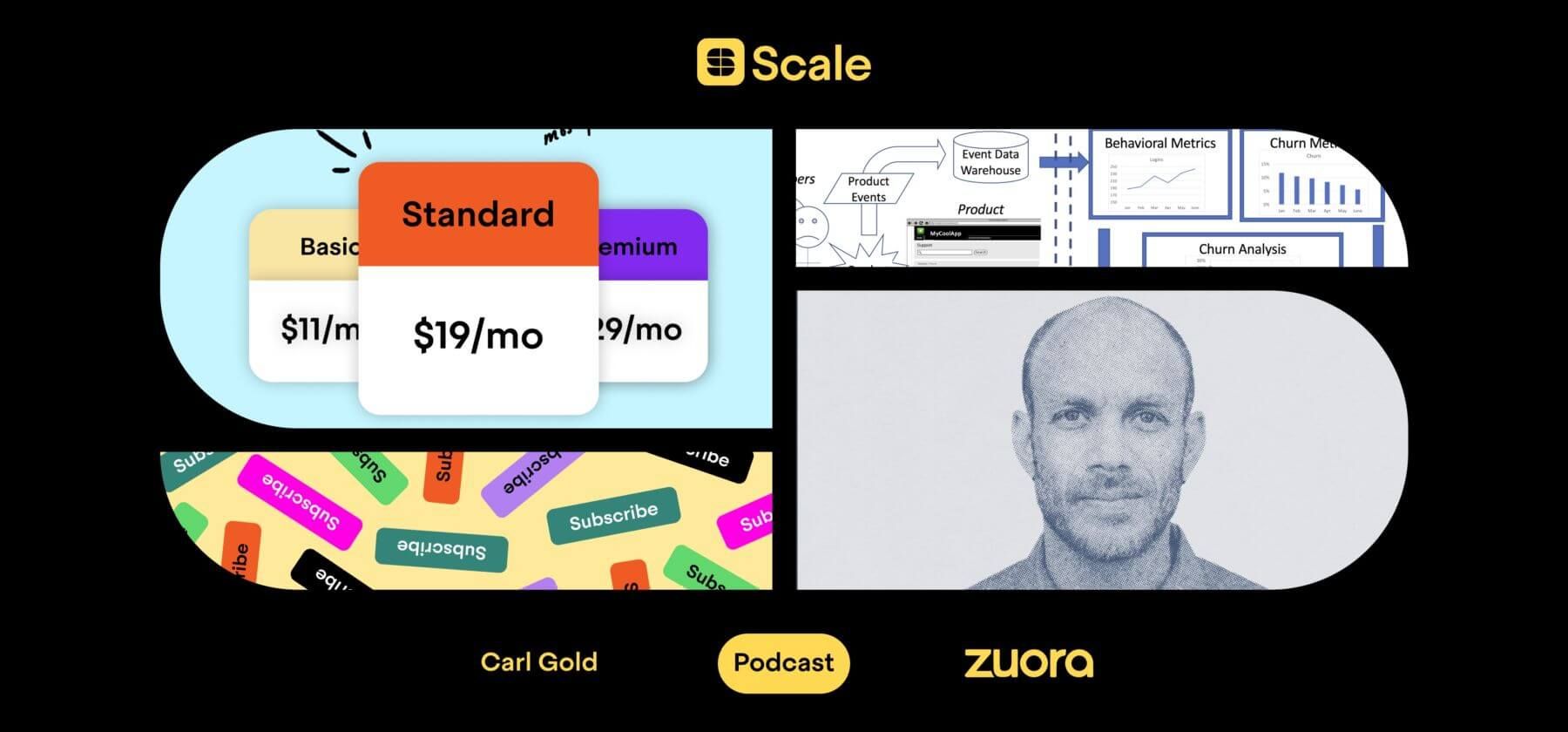
Subscribing to the future with Zuora’s Carl Gold
Subscription services have taken the market by storm – and it’s not just happening to software. It’s your master classes, personalized vitamin packs, even the productivity app you never use.
The subscription model has revolutionized virtually every industry. But there’s another reality that businesses now have to contend with: the brief is getting harder and harder to nail. Customer acquisition costs are rising, churn is every company’s poison pill, and the competition is relentless.
To navigate the current minefield of growth, businesses need to shift their focus. Success in the subscription economy isn’t about having the best product; it’s about having the strongest customer relationships. From the new services that legacy businesses are bringing to market to the metrics being used to fight churn, everything must be designed around the customer.
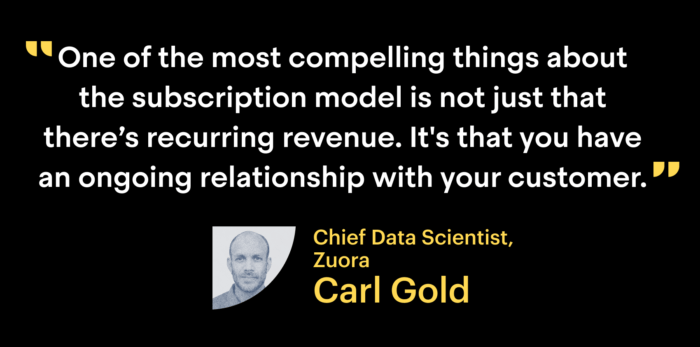 This relentless focus on customer relationships is exactly the drum Zuora is beating for this new era of companies. For more than a decade, Zuora has been at the forefront of the rise of the subscription economy, a term first coined by their CEO Tien Tzuo. Today the subscription management platform is helping industry powerhouses across the Fortune 500, including Ford, Caterpillar, and Thermo Fisher, shift their perspective from transactions to relationships.
This relentless focus on customer relationships is exactly the drum Zuora is beating for this new era of companies. For more than a decade, Zuora has been at the forefront of the rise of the subscription economy, a term first coined by their CEO Tien Tzuo. Today the subscription management platform is helping industry powerhouses across the Fortune 500, including Ford, Caterpillar, and Thermo Fisher, shift their perspective from transactions to relationships.
Over the last 7.5 years, the subscription economy has grown more than 350%, according to a report from the company – and its author Carl Gold, Zuora’s Chief Data Scientist, gets to see it all unfold. With a Ph.D. in neuroscience and a background as a quantitative analyst on post-crash Wall Street, Carl has been identifying the major trends in the subscription economy and predicting what’s to come ever since he joined the company in 2015.
In this episode of Scale, Carl walks us through how the subscription model is transforming legacy businesses, how companies can fight churn with data, and what Goldilocks can teach us all about growth. Listen to the full episode above or get Carl’s key takeaways below.
This is Scale, Intercom’s podcast series on driving business growth through customer relationships. If you enjoy the conversation and don’t want to miss future episodes, just hit subscribe on iTunes, stream on Spotify, or grab the RSS feed in your player of choice.
From legacy business to subscription service
Subscription businesses have spread far beyond Netflix, Spotify, and Amazon Prime — now they’re taking over even our most established industries.
Take Caterpillar, the world’s largest construction equipment manufacturer, that has been selling tractors, engines, and other machinery for nearly 100 years. In other words, decidedly not Netflix. Yet, they too know selling just their equipment is no longer enough.
But Caterpillar didn’t simply slap a subscription plan on top of their existing products and call it a day. They’ve taken a different approach — one that’s delivered far more value to their customers. With Cat® Connect, they’ve built a new technology to connect their customers’ entire fleet of equipment, offering work site managers critical insights into things like fuel burn, tire monitoring, and overall utilization.
Here’s Carl on what legacy businesses can learn from Caterpillar’s strategy:
“There are different models for companies that have a legacy product. The simplest, of course, is just to take the existing product and sell it in annual contracts rather than in a perpetual license. Caterpillar is a good example [of a different approach] because they’re not just offering their old leases on subscription. They’re actually offering new digitally enhanced products. And that’s what we see a lot of. Companies don’t just want to take their old product and sell it on a subscription instead of a license. They want to do new digital offerings where subscription is really the most natural way to do it.”
By building long-term customer relationships, not just maximizing one-off transactions, legacy businesses who adopt a subscription model are driving faster growth. At Zuora, they’re seeing it happen first-hand — the company’s last Subscription Economy Index, which analyzes aggregated and anonymized data across their customer base, found that sales growth for connected hardware (IoT), like the service Caterpillar offers, beat the S&P 500 technology hardware index by 5x.
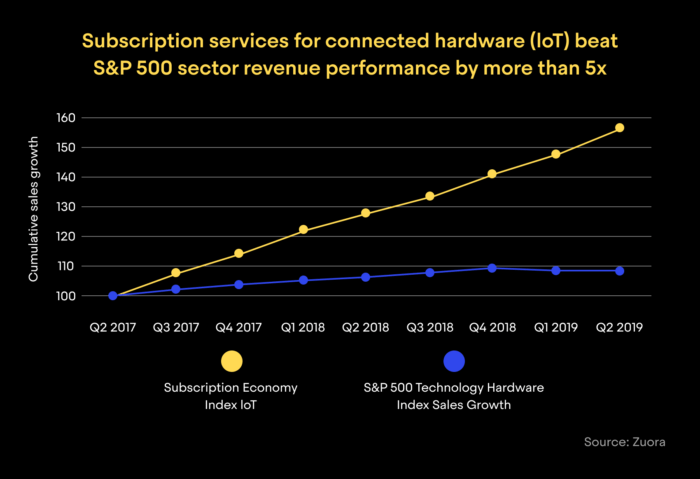
Fighting churn with data
If there’s one source of anxiety that every subscription business shares, it’s churn. But churn can be insidious and sneaky.
There’s good reason why churn is called “the silent killer.” Even when you’re looking out for it, churn can be remarkably hard to predict and even harder to prevent. Remember Homejoy? Once Y Combinator’s fastest-growing startup, the on-demand cleaning service expanded to 31 cities before high churn rates brought it back down to Earth.

Carl is the first to admit there’s no silver bullet when it comes to fighting churn. Instead, he sees reducing churn as the arduous work of continuously increasing value for your customers – and that’s where data, specifically key customer metrics, can play an important role. The author of a well-respected book on the subject, Carl explains his approach:
“To fight churn, you need to really assess your business and develop a set of great customer metrics. And every great customer metric is going to show a really strong relationship with customer engagement and retention on the one hand and customer churn on the other hand.
“In a nutshell, you have to be really monitoring the activities that give the customers the most value from using your service. You want to capture the magical or ‘aha’ moments that you’re delivering to your customers. The overall use of data and customer metrics is critical to reducing churn.”
Every business will have its own customer metrics that allow them to draw insights on churn, metrics that track how much value is being delivered to customers and how healthy those customers are. But, even more than being a good measure of future churn, these metrics must also be actionable for those within the business tasked with turning these customer relationships around. Fighting churn with data, as Carl makes clear, is a team sport.
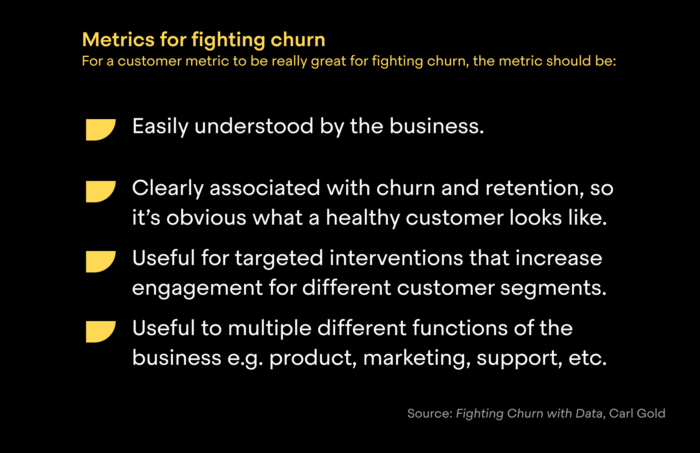
The goldilocks approach to growth
We’re all familiar with the story: Goldilocks stumbles on a home in a forest and, upon entering, she finds three different bowls of porridge sitting on the kitchen table. She tries the first one, only it’s too hot. She goes for the second bowl, only it’s too cold. Finally, the third is just right.
This “just right” principle has been widely applied to fields like astronomy, psychology, and economics, and the subscription economy is no exception. And not just in the fight against churn. The goldilocks approach can be used to deliver increasing value to your customers, improving your relationships with them and boosting your revenue too.
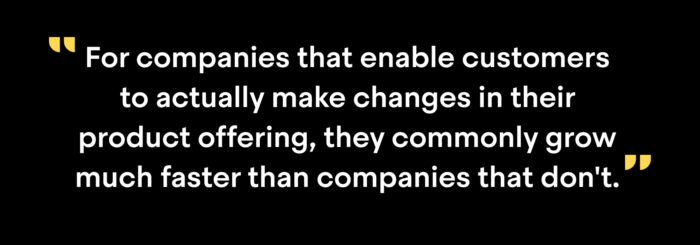
Borrowing the Goldilocks principle – having just the right pricing plan can drive up both perceived value and customer retention. If you offer multiple plans with different uses and features instead of a fixed fee, customers can pick the option that best serves their needs. The same applies to charging for usage and providing the ability to opt into and out of different features of your product. As Carl puts it:
“There are a couple of ways in subscription products and in your go-to-market where you need to get things just right. Because that’s the point of Goldilocks – not too hot, not too cold, just right. One area is to allow customers to opt into and out of different features of your product, make changes in their product selection and things like payment terms. It really leads to better revenue and lower churn when customers make changes. We found companies that enable customers to actually make changes in their product offering commonly grow much faster than companies that don’t.”
In fact, according to Carl’s research, those companies grow 28% faster than companies whose subscribers can’t make changes to their accounts. They also, generally speaking, reduce churn by 25%. The Goldilocks approach, it turns out, works out wonders in the subscription economy. Or should we say, it works just right.
You can also read a full transcript of the interview which has been lightly edited for clarity.







